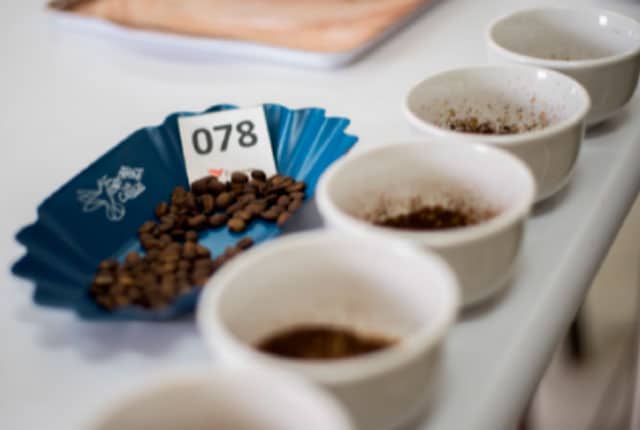
There are a number of different roast defects which can affect the flavour of your coffee. You might taste the burnt and ashy flavours of scorched coffee, or maybe even oaty and bread-like notes of baked coffee.
As a roaster, you won’t want these flavours overpowering the hard work you’ve put into a roast. Identifying these defects by sight and taste will help you roast to a higher standard and more consistently.
Read on to discover why cupping is so important in roasting, how to identify defects in cupping, and how to make changes in your roast for that defect.
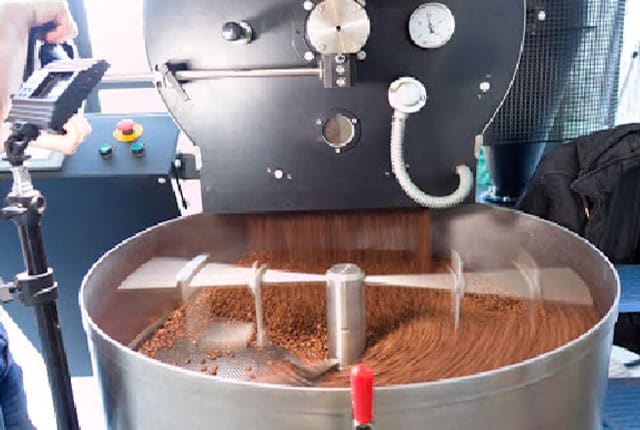
Why Identifying Roast Defects Is Important
Roast defects can affect the flavour of the roast in different ways. This can range from slightly obscuring flavour notes to dramatically overpowering the flavour in general. Identifying these defects and how to combat them means that the desired flavours of the coffee can shine through and that your roasts are consistent.
Whether you’re roasting a classic espresso blend or a limited edition micro lot, consistency is key. Customers are accustomed to the flavour profile of their everyday coffee and are after the special flavours or single origins and micro lots. Roast defects will interrupt the consistent and special flavours of these coffees, so it’s crucial that they are identified after roasting in the quality control phase.
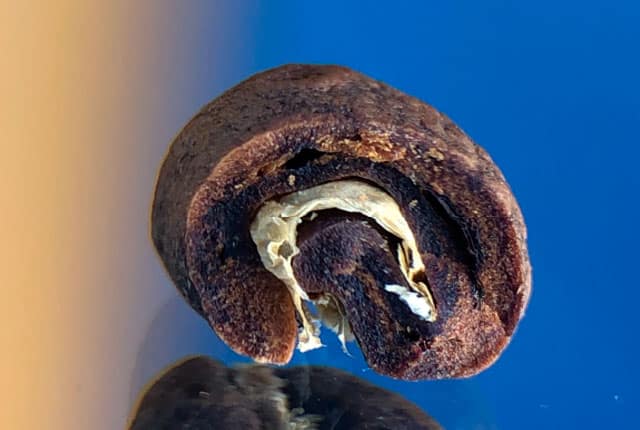
Cupping to Identify Roast Defects
There are different ways to identify roast defects in batches of coffee. I spoke to two well-seasoned roasters in my area of Cape Town about how they identify them, and any tips on doing it.
Warren Machanik from Quaffee Coffee Roastery explains that they start with cupping and identifying the flavour profile, which is then developed through roasting. Warren tells me, “afterwards we use the V60 coffee drip to brew the coffee so we can evaluate if we are still on track. If not, we fix the roast.”
“Roast today and cup tomorrow and take note of the variants,” Theo Snyckers, founder of the Camissa Coffee Company roastery, tells me. “Take note of what you did with your bad coffee. By doing cupping you are always evaluating your coffee and if the coffee has defects you can adapt in your next roast.”
Each roaster has their own quality control procedures in place. The key to this is to be consistent in whatever you choose. This way, you’ll have a better chance of identifying defects in your roasts.
You can also identify roast defects through checking them by hand, as some defects will be obvious to spot in roasted beans.

How to Identify Roast Defects in Cupping
Roast defects occur for different reasons and at different times within the process. Each defect will have a different effect on the flavour of your coffee, which is why it’s important to spot this in cupping and adjust your roast to fix these.
Underdeveloped
A batch of coffee may come out underdeveloped. First, you may be able to spot this visually. When cupping underdeveloped coffee you might notice that the crust is less likely to form.
One reason for this is that there has not been enough caramelisation of sugars or development of carbon dioxide gases within the roast. This is also why you might sometimes struggle to form a crust of a light roast coffee.
Theo explains that a solution would be to stretch out the development time from the first crack to the end of the roast. However, be careful not to burn off too many sugars in the process.
An underdeveloped coffee can taste green, grassy, hay-like, barn-like, or pea-like. Theo also advises that you can taste the potential of the bean but might find that the flavour notes could have been accentuated a lot more.
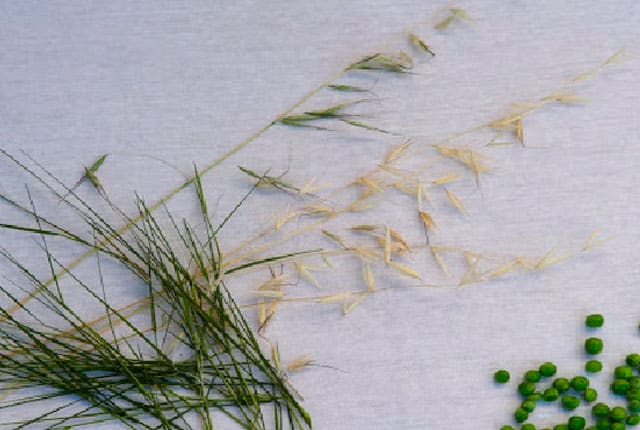
Baked
This defect isn’t possible to spot by just sight. Instead, it must be identified by tasting the coffee after roasting.
It will occur if the beans take too long to reach first crack. This is likely due to not enough energy in the roast. To avoid baking your coffee, ensure you are adding enough energy to your roast so the first crack doesn’t occur too late.
This doesn’t mean a slow roast is always a bad thing, of course. As Scott Rao says, the issue is when the Rate of Rise crashes hard, not gaining enough heat fast enough. Scott also says that in efforts to decrease the acidity in a roast, some roasters intentionally bake their coffee.
You can identify a baked defect in cupping. It can taste bready, flat, dull, or oaty.
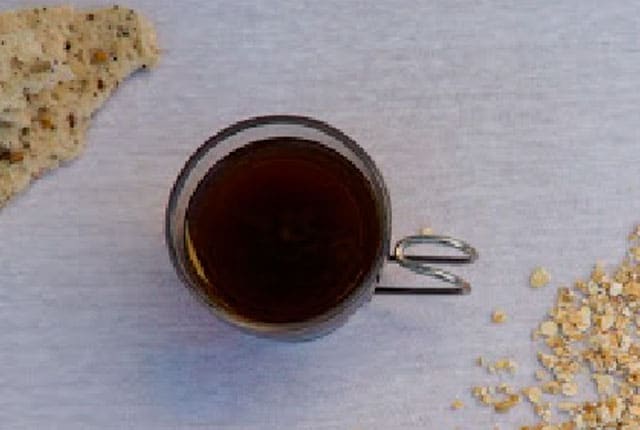
Scorched
This defect can sometimes be spotted without tasting. You may notice that the flat side of the bean is dark or charred. This is caused by the drum being too hot and moving too slowly.
“There’s not enough momentum to toss the beans about and they sit on the side of the drum. This results in the one side of the beans becoming scorched and the other side underdeveloped,” says Theo.
How do you prevent scorching? First, try lowering the drop temperature, which is the temperature that you drop the beans into the drum. Second, you can increase the speed of the roasting drum to increase momentum. Be aware to not to increase the drum speed too much. This will result in the beans being pushed to the sides of the drum, creating the same scorched defect.
You can expect scorched coffee to taste smoky, burnt, bitter, and ashy, combined with some green, grassy, and hay notes from the underdevelopment. These will overpower the other flavours.
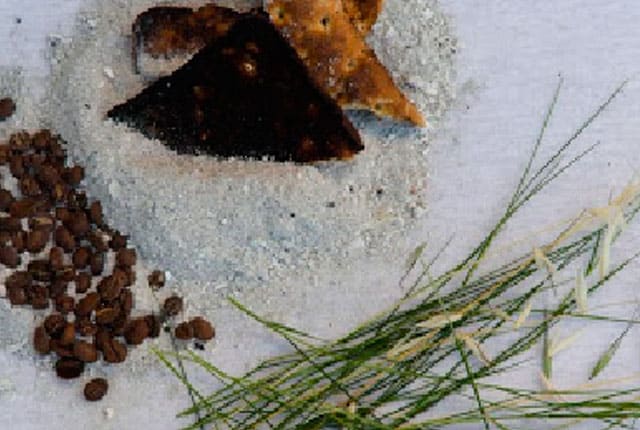
Tipped
You might recognise this defect through the black markings on the tips of the beans. This is caused by too much hot air too early on in the roast. The bean cannot absorb heat fast enough and so cannot transfer the heat throughout the bean. Instead, the moisture leaves the weakest part of the bean and burns the bean at that point.
If you’ve found tipping in your roast, either by taste or sight, the solution to this would be to lower the drop temperature. This means the bean will have time to absorb the heat more efficiently.
While cupping a roast with a tipped defect, you may taste flavours similar to scorched coffee, such as smoky, burnt, bitter, or ashy notes. As with the scorched defect, these flavours will overpower the other flavours.
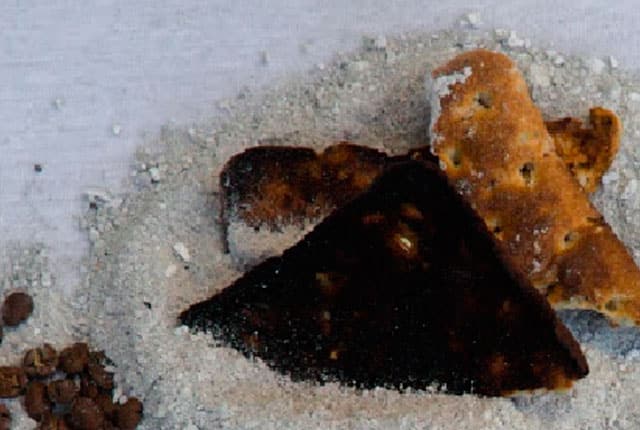
Burnt
You should be able to identify a burnt coffee by sight. The beans are likely to be dark in colour, black, with an oily finish. However, one coffee drinker’s burnt, could be another drinker’s perfect cup. This is all down to personal preference.
Burnt coffee will occur when the beans are roasted too far past the first crack, and the development of the coffee has been overdone. Theo explains that a burnt coffee has had “all the unique characteristics of the coffee burnt off”.
One of the best ways to combat the burnt defect is to shorten the development time, which occurs after the first crack.
The burnt defect might taste like ash, burnt, carbon, or bitter when cupping or tasting coffee.
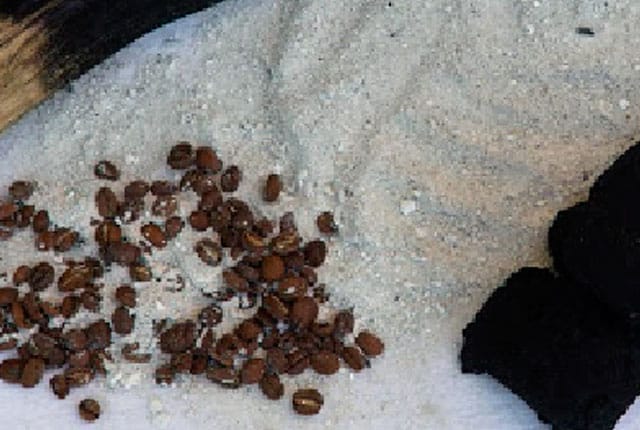
Handling Defects in Lots
If you identify roast defects in a batch of coffee, you now need to decide what to do with them.
Beans with defects can be removed manually, but this is a time- and labour-intensive process. Warren suggests that if your roastery has the budget, optical sorters can be an investment to sort roasted beans.
Some roasters may be tempted to sell defective coffee in blends, but this can backfire. Theo says, “If the coffee is not good enough for the cupper, then are you still going to give it to your clients? That coffee will be packaged under your name.” His philosophy is “never blend to hide, blend to compliment the roast”.
The beauty of identifying defects in the roast is that your skills in roasting are good. The next steps would be to use what you find in cupping and try again until it’s perfect.
The special flavours of your roasts are what make it unique. Roast defects can slightly change the notes or dramatically alter the flavour, ruining the unique characteristics of the coffee.
Ensuring you’ve got quality control after roasting in place to identify these defects, combat them, and retain consistency is crucial to you as a roaster as well as your customers. Grab a cupping spoon, check your roasts, and keep the delicious roasts coming.
Written by Caryn Smith.
Original article made by : https://www.perfectdailygrind.com
